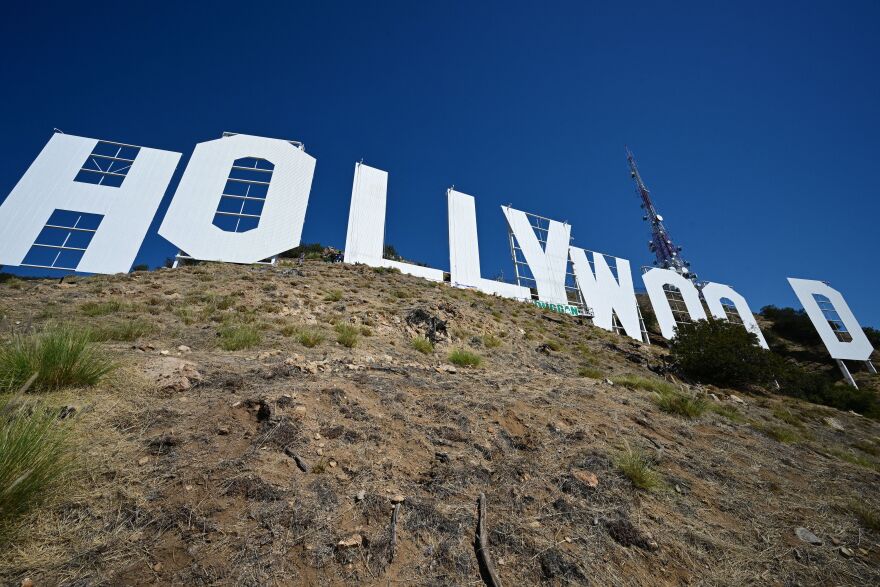Truth matters. Community matters. Your support makes both possible. LAist is one of the few places where news remains independent and free from political and corporate influence. Stand up for truth and for LAist. Make your year-end tax-deductible gift now.
When And Why The Hollywood Sign Was Torn Down And Completely Replaced

The Hollywood Sign's been through some stuff. It changed from "Hollywoodland" to just "Hollywood," was almost destroyed before being saved by Playboy's Hugh Hefner, and starting this week in 1978, it was completely torn down. L.A. spent three months with no Hollywood sign. But that teardown was just to bring it back.
Hollywood itself was then on the decline, and the sign's disrepair seemed to reflect it — the top of the D and all of the O even fell down the side of Mt. Lee.
The rest of the sign wasn't safe either — someone set the bottom of the second L on fire. You can see some images of what the messed up sign looked like at the beginning of the Ben Affleck movie Argo.
"Hollywood's once-proud emblem now served as a glaring badge of dishonor — rusted, dilapidated, soon to literally crumble under its own weight," the organization behind the sign says on its website.
Fleetwood Mac had promised a charity concert in 1977 to save the sign, but local residents kept that from happening.
Hugh Hefner saved the Hollywood sign in 2010, but that was the second time he'd done so. The first time was back in 1978, as he gathered other celebrities for a Playboy Mansion fundraiser to raise the $250,000 to rebuild the sign.
Each letter had its own sponsor. Alice Cooper donated one of the O's, Gene Autry donated an L, Hugh Hefner himself — surrounded by Playboy bunnies — paid for the Y. They laid down $27,777 each, with various reasons given for the letters they chose. Cooper said he bought the O in honor of Groucho Marx.
Hefner said that the sign was the Eiffel Tower of Tinseltown and that restoring it was symbolic of restoring Hollywood's glamor.

It was ahead of the 75th anniversary of Hollywood — which the Hollywood Chamber of Commerce itself didn't know about until a TV host told them about it.
"It's embarrassing," the chamber's then-executive director Michael Sims said, "but we really had no idea."

It took almost three months, from Aug. 8 to Oct. 30, 1978. Sign No. 2 stands exactly where Sign No. 1 did — though it's actually 5 feet shorter, which helps it to be more stable in the face of the wind and other elements. The sign was also strengthened by using steel footings instead of telephone poles.
There were concerns about the big rollout — ahead of a TV special where the new version was set to debut, reporter Pierre Cossette said, "Can you imagine what would happen if the smog rolled in? What do we switch to? A basketball game?"
But the special aired, and 60 million people watched it on TV.

The sign was more recently spiffed up with a fresh coat of paint in 2012, but it wasn't the epic teardown/restoration of those months in 1978. The sign has remained there any time someone in Hollywood looks up ever since.
See more of the sign's history in the classic episode of Huell Howser's California Gold.
More on the Hollywood sign












